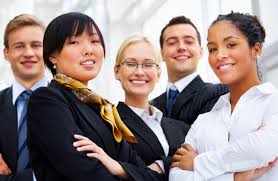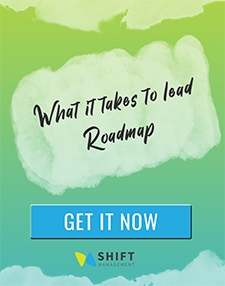
Ever wonder how some people have the uncanny ability to get people to know, like, and trust them within just minutes of meeting?
Academics call it the “KLT” factor and it measures how much a person feels they “Know, Like, and Trust” you.
Notice that KLT rests entirely on perception and has little to do with reality. Some people can make you feel that they are a long lost old friend ready to listen empathetically to your deepest secrets when the only thing you actually have in common with them is that you’ve been standing in the same grocery store line up for 5 minutes.
And for job seekers, mastering how to increase your KLT factor can be the difference between walking out of an interview with a job or a great referral and slinking out of that same meeting, totally baffled about why things went so wrong.
This series of posts will take you through the 3 phases of KLT. Here we’ll focus on how you can prepare to help the interviewer to like you and see you as a good hire. The next two posts will give you 8 strategies you can use to increase KLT during your interview (check out the first 4 strategies HERE). And in the third, we’ll explore some physical gestures you can incorporate into your interactions to help others feel they know, like, and trust you.

Preparing for likeability
The idea of “preparing” for likeability might seem a bit strange but the truth is that likeability isn’t a magical quality that some people have and others don’t. Just as expert magicians work for thousands of hours to present flawless performances to audiences, those experts among us who seem to innately understand what others need and expect from them have also spent a lifetime building their ability. It’s a craft, and it takes training.
Here are three ways you can start building your likeability skills.
#1. Convey passion
Interviewers want to know that you sincerely care about the work you are applying for. They will be paying attention (whether consciously or unconsciously) to your tone of voice and breathing patterns to decide whether or not you believe in what you are doing for a deeper reason than just to see a bi-weekly payment deposit in your bank account.
So, before you go to the interview, consider the role that you are applying to take on. What part of what you’d be doing actually means something to you? If you want to be hired as a cashier at the local grocery store, maybe it’s the public interaction or the fact that you get to test your memory by mastering all the produce codes. For accountants, maybe you are committed to keeping as much money as possible in people’s pockets so that they can better reach their personal and business goals, and that excites you.
Whatever it is for you, figure it out and then say it out loud to yourself in a mirror. Does your face and body language show that this actually matters to you? Practice until it does.
Then, record yourself. How do you sound when you are explaining this something that matters to you? Do you come across as sincere? Are you too loud or too soft at any point in your dialogue? Have you varied your tone? Does it sound like you are talking too fast or too slowly? Again, practice until you actually sound passionate about the position.
Lastly, tell a friend, or a few friends. Ask them for their honest feedback as you share your reply to these two questions: “Why do you want to work for this company?” and “What about this job matters to you?” And, if you want to add on a few extra questions as you practice, go right ahead.

#2. Create intrigue
Intrigue can feel tricky. The dictionary defines it as “a mysterious or fascinating quality,” which sounds simple enough but arousing curiosity, anticipation, and a desire to know more about you in an interviewer can be, well, tricky. Especially if you want them to be intrigued enough to take action in your favour
Good news – creating intrigue in a job interview is really about only one thing: focusing on your listener 100%.
When you engineer your message to be entirely about the listener’s desires (to hire a candidate who “fits” both the job and the organization), their fears (that may include sitting through yet one more unsuccessful interview), and their needs (which may be as simple as to feel competent in their role as an interviewer), then that interviewer will be highly interested in hearing what you have to say.
As you prepare for the interview with your eye on intrigue, make sure you have answers to these two key questions:
- What is an exciting, different, or unique way of looking at a long-standing problem in their organization?
- What skills do you have to fix that challenge?
When you show how you can develop solutions to problems that organization faces, you can trust that your interviewers will be automatically intrigued.

#3. Show confidence
The steps you have already taken to prepare for your interview by learning to convey passion effectively and in creating a sense of intrigue by showcasing your problem finding and problem solving skills are already helping you to present yourself with confidence.
But, there is more you can practice.
Just as you have practiced the words you want to choose and they way you want to say them, you can do the same thing by recording yourself and getting feedback from others on the way that you walk, sit, shake hands, and use eye contact. What you’re looking to present is a successful, confident person who is ready to bring their success and confidence to that organization.
Subconsciously people look to others’ nonverbal communications in order to create an impression of those individuals. What this means for you is that from the moment your interviewers see you standing, walking, and sitting to how they feel you shake hands with them to how they see your eyes looking at them and the room, their brains will be working on a portrait of you.
It’s important that you pay attention to your posture, whether sitting, standing, or walking. Hold up your head and pull your shoulders back so your chest is open. Next, concentrate on your belly button and imagine it slightly pulling back toward your spine – this will help you support your lower back and lengthen through the spine. Then, take a deep breath and relax your shoulders.
And there’s more news here: your brain is also working on a self-portrait of you based on the body language you choose to use.
Dr. Amy Cuddy, a social psychologist at Harvard Business School, has found that your body language shapes who you are. More specifically the way we position our bodies impacts the way our body releases and processes hormones. So, when we use what Cuddy labels “power poses” or stances that take up significant space (think of any stance a superhero may do after defeating a nefarious villain), we increase testosterone levels in our body and subsequently decrease our stress hormones.
Cuddy recommends using power posing for a full 2 minutes before entering a situation that you perceive as stressful – such as a job interview. Because most hormones last within your body for between 6 and 8 hours, you don’t necessarily have to greet your interviewers using a Superman or Hercules stance to get the benefit of increased testosterone. Go through your power poses before you leave your house or find a bathroom stall to duck into before your interview starts and set a timer.
Sound crazy? Maybe so, but I bet you’re intrigued enough to sacrifice 2 minutes of your time before your next interview.

Final thoughts…
Prepping for interviews can feel tedious, repetitive, and mundane – probably not so different from the magician who has tried to pull a rabbit out of his hat 100s of times before he is finally ready to perform for an audience.
Mastery takes practice, and in order to master KLT, you too will need to practice and the 3 ways we have discussed will help:
-
Convey passion
-
Create intrigue
-
Show confidence
As you work through these processes, you’ll find that people will come to know, like, and trust you quickly and that they will be much more likely to act in your interests in any capacity of your life.
Use this knowledge to your benefit and go win that job interview!
Looking for more ways to impress interviewers? Check out these other posts:
About Marie:
Marie Gervais, PhD, CEO Shift Management is a business-to-business entrepreneur who specializes in helping employers train their middle management to lead, get their workplace learning online and interactive, and conduct team assessments to figure out who to promote and how. She has a background in integrating internationally-trained individuals to the workplace and has supported many businesses in their efforts to hire, retain, support and promote immigrant and diverse employees.
Get in touch – she would love to hear from you: marie@shiftworkplace.com or 780-454-5661






